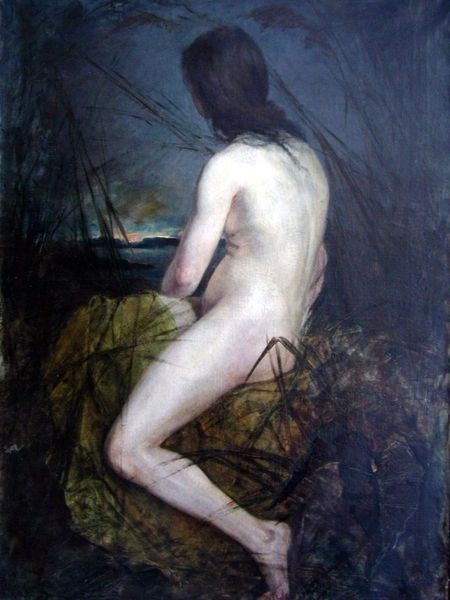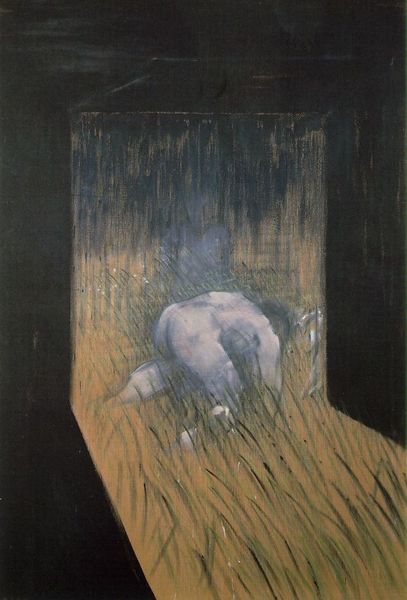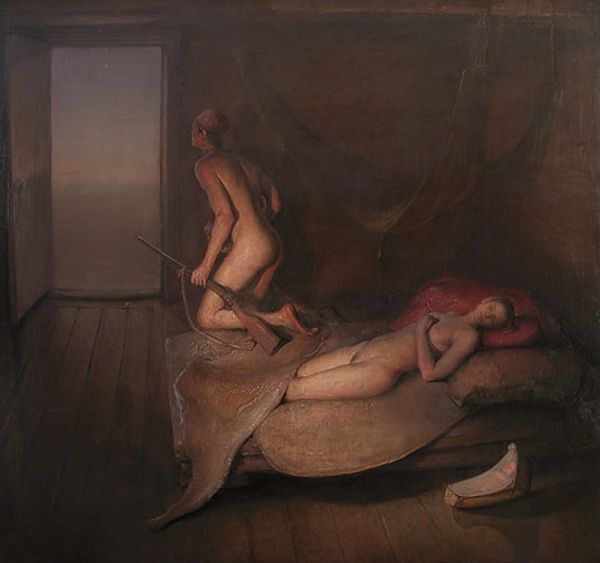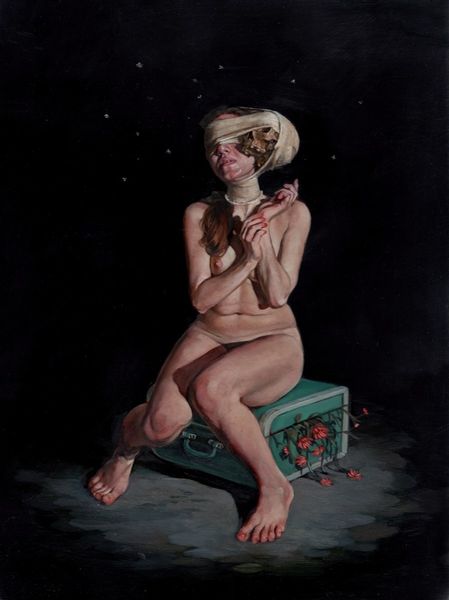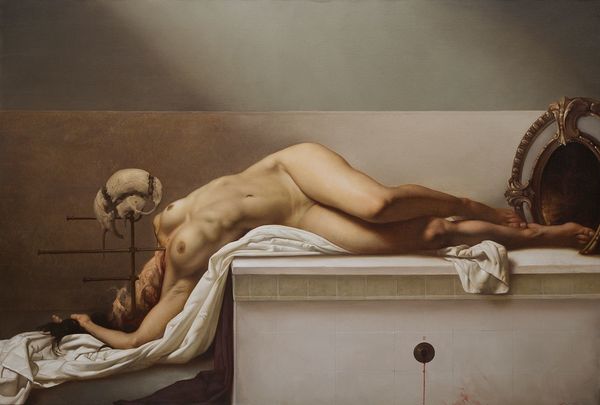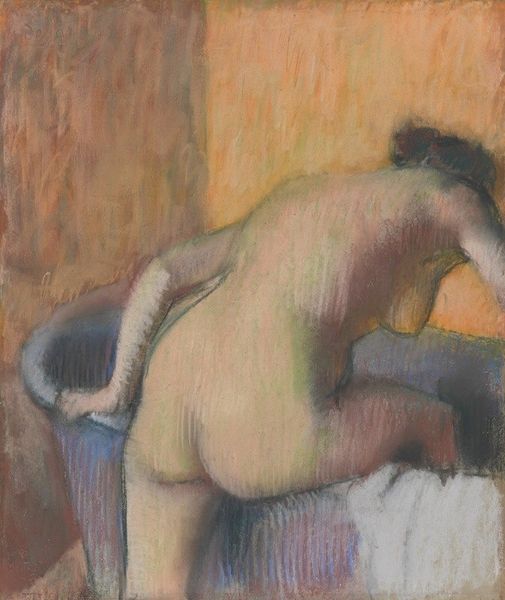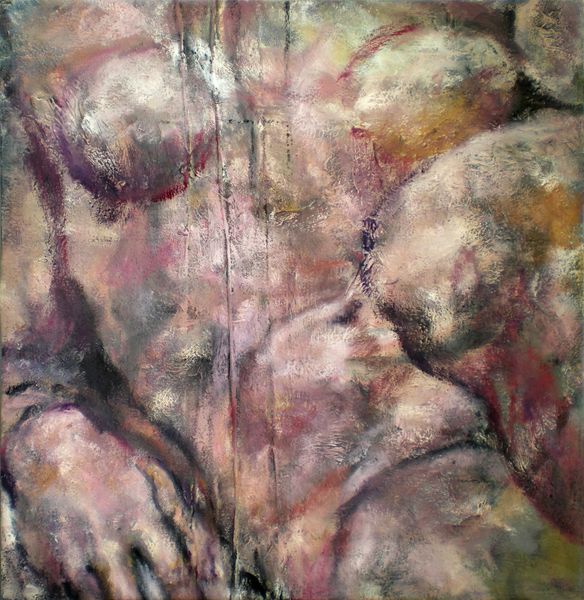
oil-paint
#
acrylic
#
oil-paint
#
figuration
#
oil painting
#
neo expressionist
#
cityscape
#
genre-painting
#
nude
#
surrealism
#
expressionist
#
erotic-art
#
realism
Copyright: Modern Artists: Artvee
Editor: This is Joshua Flint’s 2016 oil-and-acrylic painting, "All the White Balloons". The figure looming over a dimly lit town has a haunting quality. How do you interpret the work's compositional tension between the figure and the town? Curator: The juxtaposition is certainly arresting. We might begin by noting the use of chiaroscuro, the stark contrast between light and dark, which immediately establishes a dramatic visual field. Note how the artist segments the frame into light and shadow. The artist uses shadow to create volume that sculpts a dynamic form across the surface. Observe the composition, with its deliberate weighting of the figure relative to the village, which diminishes scale and underscores thematic unity. Editor: The village seems so small and quiet beneath the nude figure. I find the lack of details in her face especially unsettling, though the illuminated buildings pop more. Curator: Precisely. How does the composition underscore the themes of dominance and intimacy as visual properties? What specific shapes, colors, and formal organizations strike you in relation to that dynamic? What affect does the muted palette create in contrast with the bright yellow building lights? Editor: I think the earth tones contribute to the feeling of her figure's looming presence; the yellow lights really jump out and help to establish contrast. This technique gives shape to the depth across the whole canvas. I hadn't thought about that dominance! I'm now struck at how I’ve missed Flint’s skillful integration of color to emphasize the depth of composition. Curator: Indeed. That subtle depth is key to unlocking the thematic concerns held between presence and place. With formalism, visual clues guide our interpretations. The lack of definition invites close formal inspection of the artistic structure itself.
Comments
No comments
Be the first to comment and join the conversation on the ultimate creative platform.
